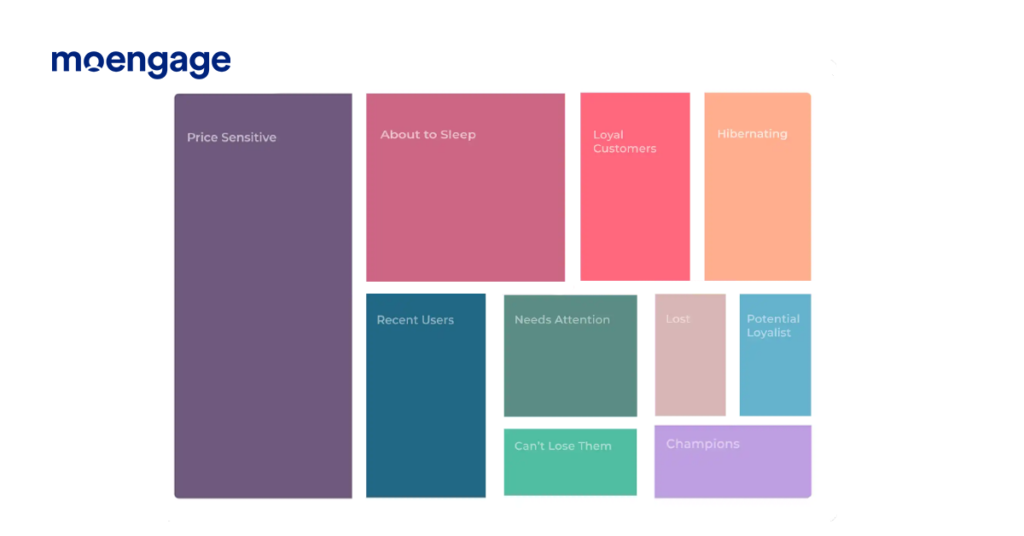Startup to Scale Up: How a Good Customer Engagement Strategy Can Push You Forward

Reading Time: 6 minutes
As bigger brands engage their customers with glamorous ads and low prices to scale their business up, what is a startup’s secret sauce to success? We spoke to Rodrigo Sciammarella, the CRM Lead at MANO, to understand how fast-growing SMBs look at customer engagement, their current setup, and the questions they need to ask while deciding to invest in a customer engagement platform.
MoEngage: We know you’ve been a part of multiple scale-up efforts at various startups. Please tell us a little about your background and the projects you are currently working on?
Rodrigo: I lead the CRM efforts at MANO Africa, the first ultra-fast grocery delivery app in Africa. My experience, over the years, has allowed me to work across different areas in marketing in multiple different regions like Latam, Africa, and Europe.
What are some of the pain points that prompt startups and mid-sized businesses to look for a customer engagement tool?
With smaller companies, it becomes a matter of conserving our resources for growth-oriented tasks. Most companies operate with small teams; each team member must perform multiple activities and focus on more areas. They don’t have a separate person for business intelligence who can help with reporting or analytics. If they have to look at business strategy and campaign execution, they cannot afford to create multiple manual reports. Most startups have limited resources in terms of employees. Early on, we realised that we need a platform that gives us a subset of reports, out of the box, that we can present company-wide.
Companies have a myopic vision where they only look at orders and revenue instead of keeping a good check on the effectiveness of our campaigns in engaging with our target audience. We wanted a platform that helps us analyze engagement, identify inactive users, and brand champions that we could leverage in our campaigns.
For an SMB to build a solid base for their marketing tech stack, the requirement remains the same. SMBs would need analytics and reporting functionality, campaign management, and orchestration functionality. Their goals may vary. It may be to engage more, sell more, drive more downloads, retain more, etc. but the basic setup is going to be the same.
A lot of companies specialize in consulting for startups. Their advice would be for your startup to build a solid customer engagement strategy. However, in addition to getting expert input into how you can go about this, startups would also gain more if they invest in building a strong tech stack and a customer-centric team within the company.
Startups change every day. SMBs have an inherent nature of continual change. Their goals, focus, and business models evolve rapidly. Most engagement and campaign management tools they employ have a very myopic vision and cannot match the pace of change to scale up with the brand
Most of our growth activities were outsourced. We decided to make it internal. This is when the lack of integration between channels became evident. We had one tool for email, one for push notifications, and another for analytics. I’d keep having to switch between the email tool, the SMS tool, the push notification, and the analytics tool to get a holistic picture of what’s working and what’s not. They worked in silos. If I created a segment on one tool, I couldn’t export this to another tool and seamlessly run a campaign. This also obstructs data flow between channels and hinders having a multichannel strategy. I’d rather give away these three and have one solution that helps me plan and orchestrate a campaign across channels.
You spoke about startups having a single-minded focus on sales, acquisition, and revenue. If you were to advise startups on what areas they need to have in place in the first year, would you say customer engagement is one of them?
I definitely would. Most startups want brand awareness and hence focus on acquisition. This is key for the business to grow, there’s no denying that. However, most times, the customers you’ve acquired don’t go through the ideal natural course of downloading your app, signing up, logging in, performing activities on it, and finally making a purchase. For these customers, you’re going to have to nudge them to take that course. You’d want to identify dormant users and make them active on your app. As a marketer, you’d want to cultivate a strong relationship with the customers who buy ten times more than your average customers to turn them into brand evangelists.
Customers who order regularly, our store managers know them on a first-name basis, they help them with their queries immediately, understand them because they have regular interactions with them. This level of understanding needs to be cultivated online and across channels.
Especially for niche apps, customer engagement should be a priority. Let me tell you why. Let’s say there’s an app for engineers or doctors or teachers. You’ll only be able to acquire new users for a while before exhausting those who wish to engage with you and are part of your target audience. To ensure consistent growth after this, you will have to focus on understanding what works for your current active customer base and engage them further. While startups are very focused on the acquisition, they need to know when to switch gears into engagement and retention.
What are some strategies you adopt to engage a customer that has, let’s say, just downloaded your app into someone who buys from you consistently?
Now that we’re scaling up, we’re working on combining online and offline marketing channels to increase recall as well as engagement. What we’re doing is advertising locally using banners, people wearing branded uniforms, caps, etc. in certain affluent areas. When consumers open the app in those areas they get an in-app message with discounts or coupons. In today’s day and age, you have to combine offline and online marketing activities to survive and thrive. It makes the campaigns much more powerful, effective, and cost-efficient.
The other important thing is localisation. We chose locations we knew were residential condominiums and high-density areas and engaged with customers there through in-app messages and offline interaction.
Key Learnings From The Conversation
Why can SMBs get more out of a cross-channel customer engagement platform that helps with personalised communication?
In the game of winning and keeping your customers, SMBs have the edge over giant enterprises despite their well-lined pockets. Customer engagement in today’s digital age mixed in with a bit of offline interaction is a matter of analysing customer data, understanding behaviour, and adapting quickly to deliver personalised communications across channels. Larger enterprises with multiple departments, multiple platforms, multiple sources of information struggle with swiftly collecting this data, unifying it, and optimally using it to engage with customers in real-time. The sheer size of enterprise businesses proves to be a massive hurdle in agility and flexibility. This is where SMBs can quickly implement a customer engagement platform to run personalised cross-channel campaigns and win customers over.
What areas of an SMB business can a customer engagement platform improve?
-
Knowing your customer
A good customer engagement platform will help unify data from all sources and channels of customer interactions, mobile, website, SMS as well as in-store. Using this data and building a customer profile will benefit your business in understanding customer behaviour better.
-
Get insights into the customer journey
Customer purchase decisions are preceded by multiple activities called micro-moments that build a customer journey. A good engagement platform will help you understand customer behaviour across their journey from onboarding to repeat purchase or a drop-off. This will help you identify the relevant communication that needs to be sent at different stages. It will also help you preempt churn risks or identify champions that can be brand evangelists.

-
Enables hyper-personalisation
Our recent survey report, Personalisation Pulse Check 2021, revealed that customer frustrations often stem from when brands send irrelevant communication or forget previous purchases. Having a holistic and unified view of the customer and their journey puts you in a better position to send hyper-personalised one-on-one communication.
-
Gain loyal customers and reduce acquisition costs
Customers tend to develop loyalty towards brands that consistently provide valuable offerings while understanding their preferences. Such customers also act as advocates and help brands add new customers. According to the research by Annex cloud, customers referred by a friend are 4X more likely to buy. The study also states that an existing customer who refers your business to peers has a 37% higher retention rate.
-
Ensure higher reach by engaging with customers where they are
Most SMBs have realised a mobile-first approach’s potential for their customer engagement strategy and have started investing in it. However, sending personalised communication through channels such as push notifications or SMS isn’t enough. You have to ensure you reach your customers when they are most likely to respond and at a channel, they’re present on.
SMB brands that adopt a customer-centric approach and send out personalised campaigns across channels are more likely to succeed in such a competitive market. There are many hurdles to overcome to realising this vision. Helping company leaders realise the importance of personalised communication, building a business case for adopting a customer engagement platform, asking the right questions to potential tool providers, etc. However, investing in a customer engagement platform that helps you with your customer engagement goals and scales up with your business is key to succeeding in today’s competitive landscape.







